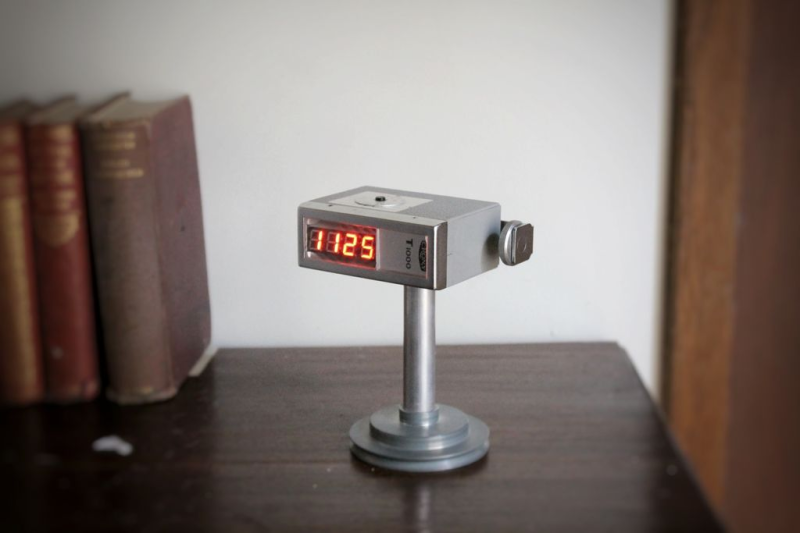Now that everyone has a phone with a camera, we would bet that fewer people than ever are in the market for a nice vintage flash unit such as the one [lonesoulsurfer] chose for this cool clock build. But here’s something that never goes out of style — a clock that doubles as a conversation piece.
At the heart of this build is a dirt cheap clock unit meant for cars. It also displays the ambient temperature and has a voltage testing mode(!), which could come in handy someday. Although [lonesoulsurfer] didn’t connect a pair of probes, he did cut a wee hole for the temperature sensor to stick out of. He also cut off the SMD buttons and wired new momentaries to the outside of the case.
Although we really like the look of the textured plastic lens over the 7-segments, our favorite part might be the stand and the way [lonesoulsurfer] implemented it. He made a threaded rod by pounding a hex nut into the end of a piece of aluminium tubing, and then dropped a bolt through the bottom of the flash body before closing it up, so it screws on like a camera to a tripod. Take a second and check out the build video after the break.
We love a good clock so much that we just had a contest to find the coolest ways to tell time. In case you missed it, here are the best of the best.
















Congratulations to the author for this cool upcycling project. It has an awesome look.
Next week:
Now that everyone has a phone that displays time, we bet that fewer people than ever are in the market for a nice vintage grandfather clock such as the one…
1/4″ – 20 Tee nuts are your friend with builds like this. Drill the appropriate sized hole in the project case, poke the nose through and pot the back side in epoxy. Then you really can mount them (or anything else) on a camera tripod.
Or you could avoid drilling any holes altogether by just utilizing the hot shoe mount that it already has, use the original trigger cable for power (or the battery compartment for portability), and use a rotary switch in place of the original settings dial.
To anyone else making one of these, before you take that old flash apart, put some batteries in it, put it close to an AM broadcast band radio, and switch on the power. As the flash cap charges, you’ll hear all sorts of interesting whistles on the radio…
So many of these projects end u just being shells powered by external power. Kudos for the battery addition
Flashy!
I love the design of this project, looks very Bauhaus